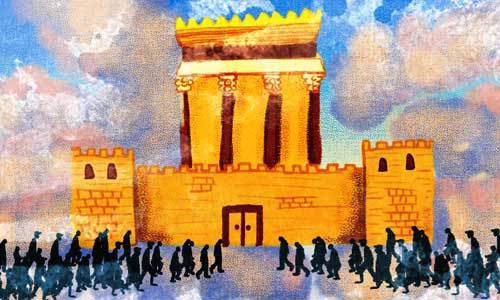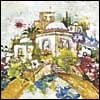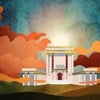The first Hakhel gathering occurred 22 years after the Israelites entered the land of Israel (in the 13th century BCE). In the presence of all the Jews gathered in the city of Shiloh, then home to the Tabernacle, Joshua read the prescribed Hakhel reading. The Torah says that Hakhel gathering follows the Shemitah year, and the Shemitah cycle did not begin until after the Jews completely conquered and divided the land—a process that lasted fourteen years.1
The gathering takes place in the venue where we "appear before G‑d"The Hakhel gatherings continued as long as the Jews resided in the Holy Land.2
Time and Place
The Hakhel gathering is scheduled for the 16th of Tishrei, the second day of Sukkot—the first of Sukkot's "Intermediate Days" (Chol Hamoed).3 If the 16th of Tishrei falls on Shabbat, the Hakhel is postponed until Sunday.4
The Torah tells us to do the Hakhel gathering "When all Israel comes to appear before G‑d." As such, the gathering takes place in the venue where we "appear before G‑d." Once the Temple was built in Jerusalem, all Hakhel gathering take place in the Temple courtyard.
The Participants
The king of Israel reads from the Torah. If there is no king – as was the case in the hundreds of years until Saul was anointed –the leader of the generation reads.
Attendance is mandatory for all Jews: men, women and children.5 There are a select few who are exempt from Hakhel—such as the elderly for whom it would be difficult to make the trek to Jerusalem and those who are ritually impure.6
The Ceremony
On the long-awaited day, the kohanim (priests) fan out throughout Jerusalem and blow golden bugles to assemble the nation. "A kohen (priest) without a bugle in his hands, it appears as if he's not a kohen..."7
A large wooden platform is erected in middle of the Temple courtyard,8 and the entire nation gathers around it. The king climbs up on to the platform and takes a seat. The caretaker of the Temple's chapel takes the Torah scroll that Moses wrote on the day he died (the "courtyard Torah") and hands it to the one in charge of the chapel, who hands it to the Deputy High Priest, who hands it to the High Priest. The king then rises, accepts the Torah from the High Priest, sits down and begins reading. (One of the kings in the Second Temple Era stood while he read, out of respect for the Torah and the people, and his actions were lauded by the Sages.)
The king then rises, accepts the Torah from the High Priest, sits down and begins readingBefore he begins to read, the king recites a blessing on the Torah—the same one recited before receiving an aliyah to the Torah. He then reads the following sections from Deuteronomy: 1:1-6:9 (this section concludes with the Shema); 11:13-21 (the second section of the Shema); 14:22-27 (a section that discusses the obligation to tithe produce—especially relevant during Sukkot, the Harvest Festival); 26:12-15 (another section discussing the tithes); 17:14-20 (a brief section discussing the laws pertaining to a Jewish king)9; and he concludes with 28:1-69 (blessing and curses).10
After he finishes reading, the king recites aloud eight blessings (the first four are taken from the prayers, the next four the king says extemporaneously): 1) The standard blessing recited after an aliyah. 2) The Retzeh blessing from the amidah prayer. 3) The Modim blessing from the amidah. 4) The Atah B'chartanu from the festival amidah. 5) A prayer beseeching G‑d that the Holy Temple should remain standing, concluding with the words "Blessed are You, G‑d, who resides in Zion." 6) A prayer for the wellbeing of the Jewish monarchy, concluding with the words "Blessed are You, G‑d, who chooses Israel." 7) A prayer that G‑d should favorably accept the priestly service, concluding with the words "Blessed are You, G‑d, who sanctifies the Kohanim." 8) A prayer and supplication wherein he beseeches G‑d for all His heart's desires, concluding with the words "Help, O G‑d, Your nation Israel, for Your nation needs salvation; blessed are You, G‑d, who hears prayer."11






Join the Discussion